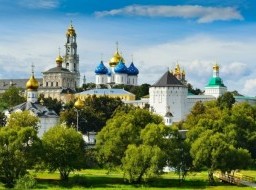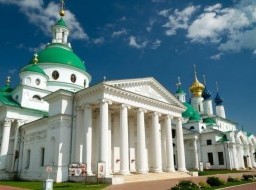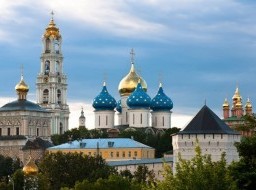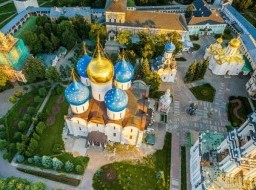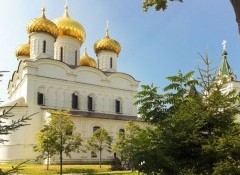Toy Museum was established in Moscow in 1918 by the artist N.D. Bartram. In 1931 it was transferred to Sergiev Posad. B. Shergin called Sergiev-Posad the capital of the toy kingdom. He wrote, "According to popular legends the first wooden toy was contrived by St. Sergius. He would carve ('with this very knife in a sheath on the belt') birds and horses of lime-wood and gift them to children with a blessing.
The depositories of the museum boast 30,000 exhibits among which are the toys found in archeological excavations, toy collections from the Oriental countries and Western Europe, popular Russian toys made of wood, clay and papier-mache', toys of the Soviet period.
The play-pretties illustrate various subjects: marry-go-rounds with moving figures of horsemen, nurse-maids dandling the master's babies, a glutton devouring game, a guide with a bear, a girl on a swing, dancers, musicians.
In the late 19th century a mass production of toys shaped on a lathe was launched in Sergiev Posad. The most noted among them were matryoshkas. Matryoshka of Sergied Posad is celebrated as the best Russian souvenir.
The museum boasts a rich assortment of wooden toys from the neighboring village of Bogorodsk. The favorite personage of these toys is a funny bear. A wide assortment toys from Filimonovskoye in the Tula region is on show.
Clay toys are represented by remarkably warm and bright figurines from the Dymkovskaya settlement near Vyatka. Clay dolls from Filimonovskoye are decorated with extraordinary rhythmically alternating stripes of green, yellow, and red.
Toys from Kargopyl of the Arkhangelsk region, Skopino and Vyrkovo of the Ryazan region, porcelain figurines from Verbilki of the Moscow region are displayed in the museum.
With the passage of time dolls gradually changed, becoming movable.
The toy collection, displaying various types of playthings, affords a goodly notion of the national industrial development in the fifties and sixties.

